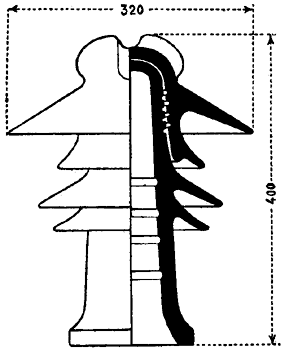[Trade Journal]
Publication: Electrical World
New York, NY, United States
vol. 49, no. 4, p. 183-4, col. 1-2
Experiments With High Potentials.
During the congress held recently in Milan by the Italian Electrotecnic Association some experiments with exceedingly high potentials on cables and aerial lines were conducted in Messrs. Pirelli's Pavilion at the Milan Exhibition by their electrical engineer, E. Jona.
For these experiments a 150-kw transformer was built in Messrs. Pirelli's works; the primary was wound for 160 volts and fed from the town mains. The secondary was wound in two similar groups of coils, which can be connected in series or in parallel. A potential of 320,000 volts or 160,000 volts can thus be obtained.
By the use of an electrostatic voltmeter a potential of 200,000 volts could be directly measured. For higher potentials the voltmeter could be connected across one of the secondary coils, thus measuring one-half of the total voltage available at the terminals.
·
·
EXPERIMENTS ON AERIAL LINES.
In the garden near the pavilion had been erected an aerial two-wired line, carried by big porcelain insulators made by Richard Ginori. These insulators, illustrated in Fig. 3, are the largest ever made; they are designed for 60,000 volts and tested up to 160,000 volts. They have four petticoats 40 cm. high and 32 cm. in diameter. The line wires, which were hung 160 meters apart, consisted of copper strands of various diameter; 20, 40, 80, 100 sq. mm., in order to show the difference of the brush discharge according to the diameters of the strand. The experiment was made at night. When an e.m.f. of 50,000 volts was reached, the smallest strand of 20 sq. mm. began to show brush discharge, while the one of 100 sq. mm. the brush discharge did not begin until the e.m.f. reached 100,000 volts. The potential was then raised to 150,000, 200,000, 250,000 and 280,000 volts. At this potential the hiss of the line was very considerable; from the insulators, line, etc., there were bright brush discharges. The electrostatic fields were so intense in all the neighborhood that sparks could be obtained from any insulated metallic mass, and all vacuum glass tubes spontaneously lit up. At 290,000 volts an arc sprang from one of the insulators and set fire to one of the wooden supports, thus closing the experiment.
 |
| Fig. 3 - 60,000 Volt Insulator. |
·
·
